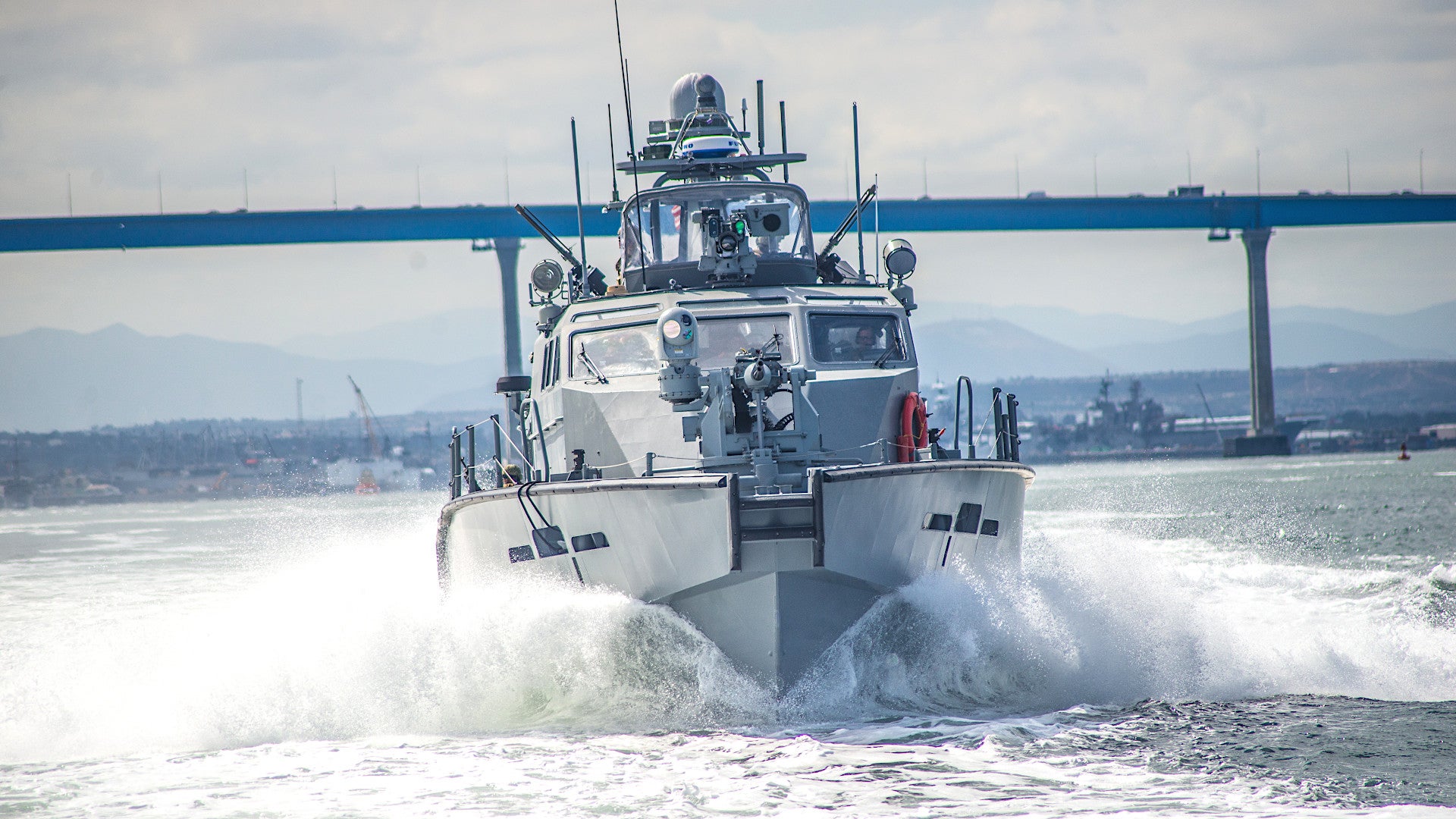The U.S. Navy is looking to divest its nearly-new Mk VI patrol boats, the oldest of which are just six years old, and has already begun laying the groundwork to do so. Barring an order to change course from President Joe Biden’s administration or intervention by Congress, the service plans to remove all 12 of these boats, examples of which are based in Guam, as well as in the continental United States, and forward-deployed in the Persian Gulf, from service before the end of the year.
An unclassified General Administration (GENADMIN) message that The War Zone reviewed said that the Navy is presently looking to get rid of the Mk VIs by the end of the 2021 Fiscal Year, or September 30 of this year. The GENADMIN came from the office of Vice Admiral James Kilby, Deputy Chief of Naval Operations for Warfighting Requirements and Capabilities, also known as N9, and is dated February 5, 2021. A source familiar with the state of the program says that Naval Expeditionary Combat Command (NECC), to which all of these patrol boats are presently assigned, could begin retiring them as early as next month.
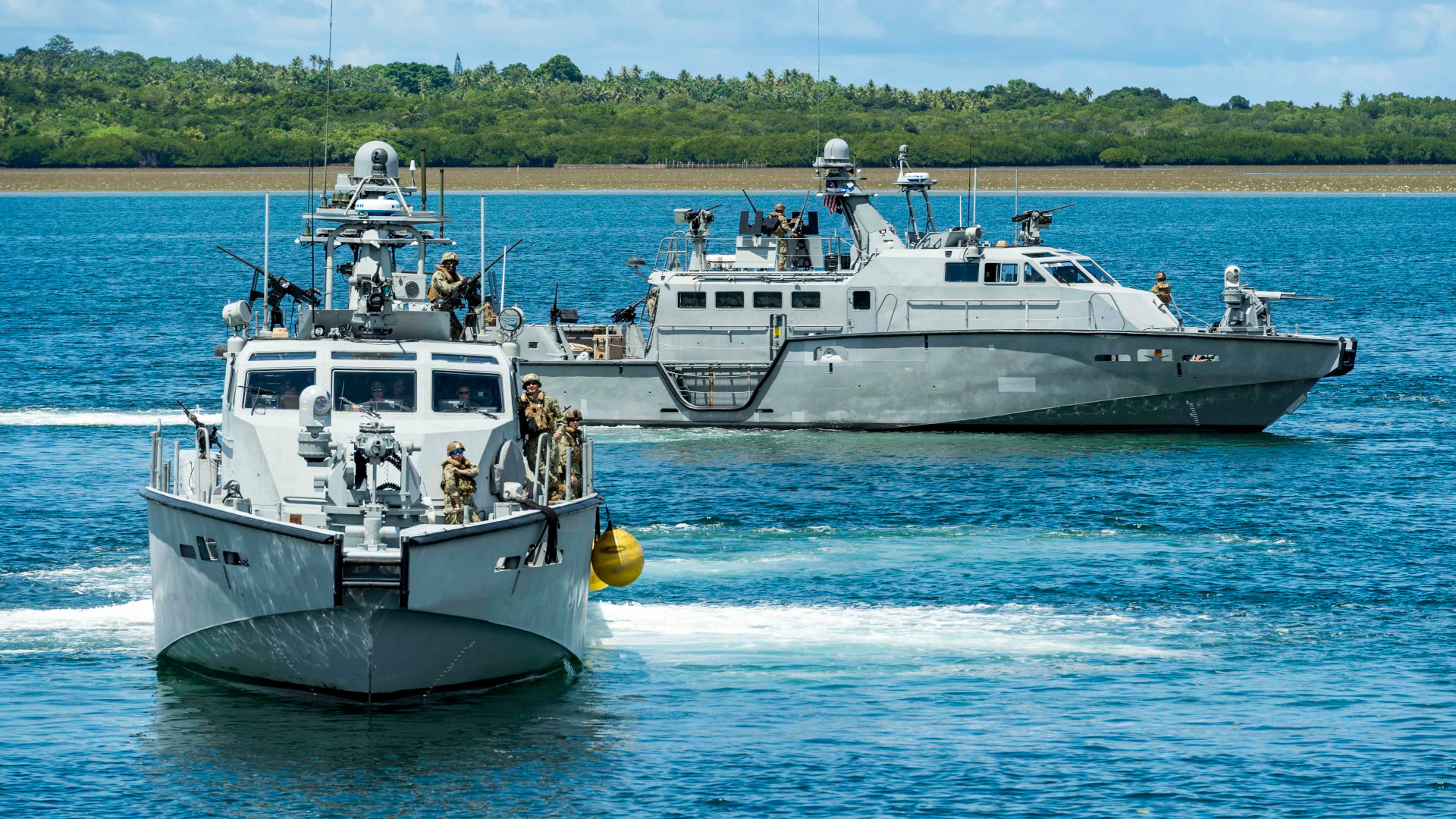
The GENADMIN says that the plans for the Mk VIs are “in accordance with approved budgetary decisions.” The message also says “this plan will be adjusted if necessary based on subsequent execution year decisions made by leadership or as required by Congressional action.”
When contacted, the Navy would not confirm or deny any plans to divest the Mk IVs or any timeline for doing so. The service did confirm, indirectly, that a proposed decision regarding the future of these boats was part of the upcoming President’s Budget Request for Fiscal Year 2022, or PB22. A public version of the annual budget request from the Executive Branch to Congress is typically released in February.
“The PB22 budget request is pre-decisional,” Navy Lieutenant Rob Reinheimer, a spokesperson for the service, told The War Zone. “We will not comment on future budgetary decisions until the budget request is submitted to Congress later this year.”
There have already been indications that the Navy might be leaning toward getting rid of the Mk VIs. During a talk as part of the Surface Navy Association’s 2021 Virtual Symposium in January, U.S. Marine Corps Major General Tracy King, the head of the Expeditionary Warfare division within the Office of the Chief of Naval Operations, had said that Vice Admiral Kilby was in the process of making a new determination about what the service’s actual requirements were for these patrol boats ahead of the 2022 Fiscal Year budget request.
“In wargaming scenarios against peer nations [such as Russia or China], the Mk VIs were deemed not really needed (given their small size and limited missile firepower),” King added, according to Naval News. The boats are “very expensive to maintain,” the Marine Major General continued.
In that same talk, Navy Rear Admiral Paul Schlise, the director of the Office of the Chief of Naval Operations’ Surface Warfare division, did confirm that the service is planning to supplant its Cyclone class patrol craft, which are larger than the Mk VIs, with a combination of Littoral Combat Ships (LCS) and U.S. Coast Guard patrol boats. There is no plan to buy additional ships of any kind to directly replace the Cyclones, though, which means the service is set to lose the added patrol capacity they offer now, as well. As of February 12, 2012, the Navy was looking to decommission three of its 13 Cyclones by the end of March, with the USS Shamal and the USS Zephyr destined to be scrapped and the USS Tornado to be made available for transfer to a foreign ally or partner.
All told, the future of these kinds of smaller combat vessels in the Navy, outside the service’s special warfare community, seems to be very much in flux.

Still, getting rid of the Mk VIs, which are, by all metrics, very young, would seem to be an, at best, controversial decision. The Navy only ordered the 12 patrol boats from SAFE Boats International (SBI), at an average price of between $7 and $8 million each, between 2012 and 2015. NECC took delivery of them between 2015 and 2017.
Despite initial plans to acquire a total of 48 Mk VIs, and repeated public statements about the need for additional examples, there have been no additional purchases in the past six years. Since then, the projected unit costs of new Mk VIs have also fluctuated between $14 million and $16 million.
The 85-foot-long Mk VIs, which displace around 72 tons, have a main armament of two M242 Bushmaster cannons, the same gun found on the U.S. Army’s Bradley Fighting Vehicles, in a pair of remotely-operated Mk 38 Mod 0 mounts, one on the bow and one at the stern. They also have two smaller remote weapon stations, each armed with a .50 caliber M2 machine gun, one on top of the front of the pilothouse and one on the superstructure behind it. Four additional weapon mounts are provided at various positions around the ship, which can be fitted with different types of machine guns or automatic grenade launchers.

The Mk VIs can get up to speeds of 45 knots and they have impressive endurance for boats of their size, too. They are able to sail up 750 nautical miles at a cruise speed of 25 knots without refueling.
They also have a very robust communications and sensor suite for boats of their type and its mission systems have an open-architecture design. This was done specifically to make it easier to integrate new and improved capabilities over time.
“The primary mission of Mark VI Patrol Boats is to provide [the] capability to persistently patrol littoral areas beyond sheltered harbors and bays for the purpose of force protection of friendly and coalition forces and critical infrastructure,” according to the Navy. The boats are also designed to be readily reconfigurable to support a wider array of mission sets, including medical evacuation, humanitarian assistance and disaster relief, explosive ordnance disposal, and special operations forces support. In the last role, they would supplement a small fleet of dedicated special operations boats that the Navy’s special warfare community operates, which you can read about in more detail in this past War Zone story.
The Navy also acquired a one-off Command and Control Boat Mk VI, which featured a more robust communications and data-sharing suite, experimenting with it for a number of years before removing it from service. There is enough space on the standard Mk VIs to employ hand-launched drones and small unmanned underwater vehicles (UUVs).


Acts of maritime terrorism, notably the bombing of the Arleigh Burke class destroyer USS Cole in the Port of Aden in Yemen in 2000, together with the experiences from the early years of the War On Terror, especially operations in littoral areas in and around Iraq, were major factors that eventually led to the Mk VI program. The boats were expected to replace an array of smaller watercraft that had been acquired in the 2000s to meet various maritime force protection and other requirements.
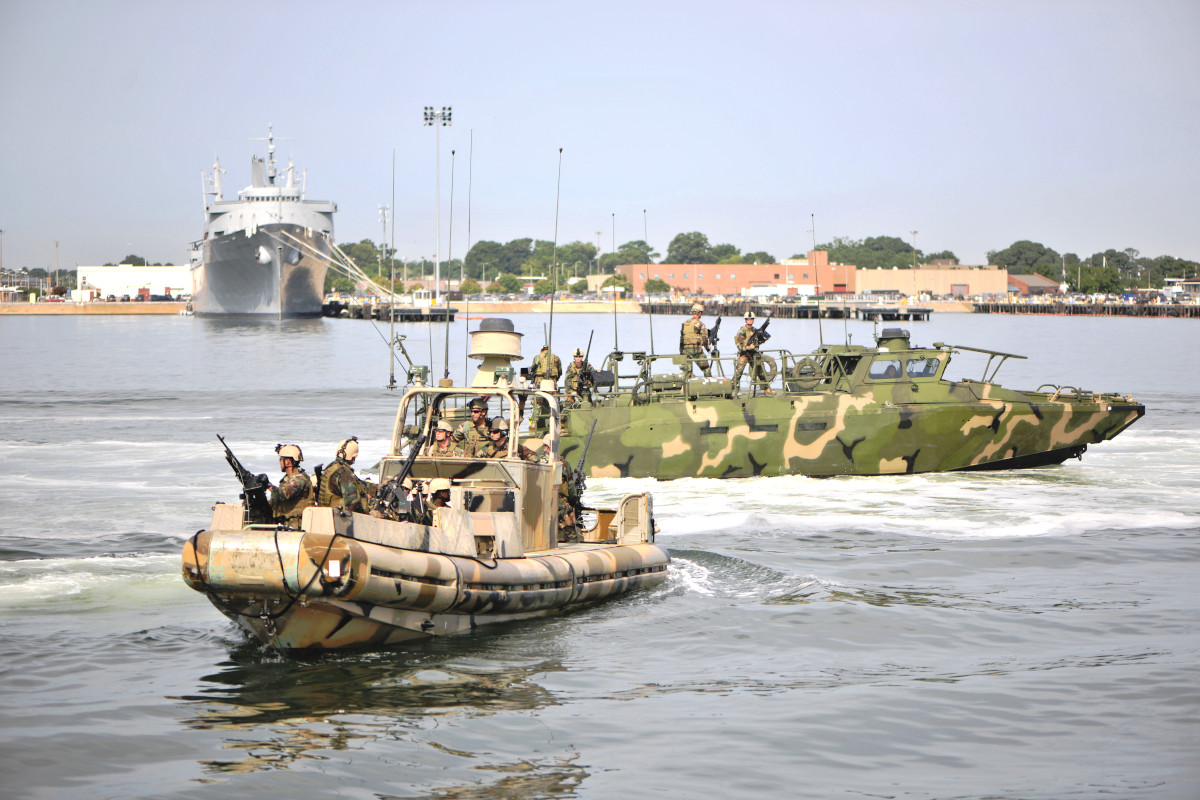
It’s certainly true then that the Navy’s original requirements for the Mk VIs were not based on the kind of higher-end conflicts that the U.S. military, as a whole, has been shifting its focus to in recent years. At the same time, though, the prospect of smaller conflicts and skirmishes with various potential adversaries remains a very real possibility.
Iran, in particular, has spent considerable time and resources developing a significant number of small watercraft and semi-submersibles armed with various weapons, including naval mines, to be used in swarming attacks on larger, higher-value enemy warships, such as aircraft carriers. This is a threat other countries beyond Iran could employ, as well, and the Mk VI’s capabilities slot very well into a multi-layered approach to countering it. Similarly, they present a valuable tool for defending against manned and unmanned explosive-laden suicide boats, as well as armed divers, which could also be used in individual terrorist attacks or as part of a larger maritime swarm.

The missions that the Mk VIs are designed to carry out are not absent in higher-end conflicts, either. Major General King’s comments about the boats’ limited utility due to their “small size and limited missile firepower” would seem to reflect a very narrow view of what roles they could fill in a major fight. Swarming boat attacks, including those involving autonomous unmanned watercraft, could easily be components of larger-scale war.
Beyond that, there are options available right now to increase their conventional firepower that could expand their capabilities against more traditional opponents. For instance, Lockheed Martin offers a miniature vertical launch system for its AGM-179A Joint Air-to-Ground Missile (JAGM), called the JAGM Quad Launcher (JQL), and has proposed it already for the Navy’s Mk VIs. You can read more about JAGM and the JQL in this past War Zone piece.
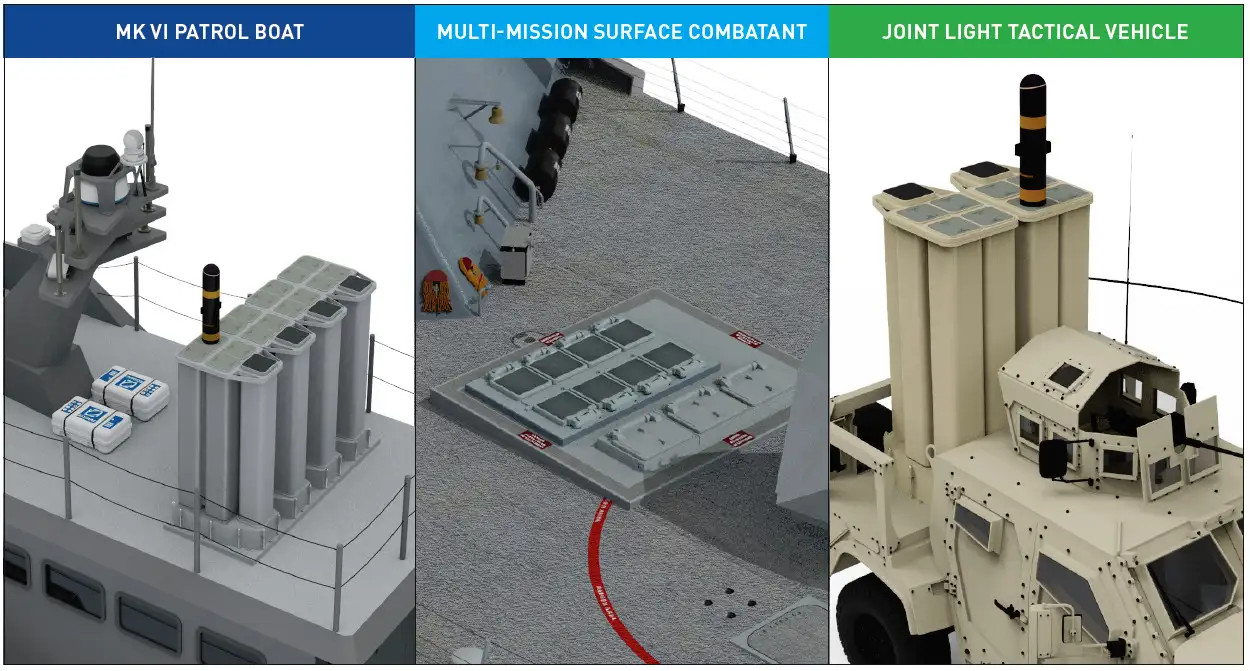
NECC has also suggested in the past the Mk VIs could be used in swarms against larger enemy vessels, themselves. Smaller missiles, such as the AGM-179A, would not be able to sink, or even severely damage, a larger surface combatant, but could potentially be used to destroy key systems, such as radars, to effect a mission kill that could effectively put the target vessel out of commission for a protracted period of time.
“Our missions were in more permissive environments, and a lot of our training was tailored toward that,” Navy Senior Chief Derrick Cox, responsible for training Mk VI crews as part of Coastal Riverine Squadron 2’s Training Evaluation Unit, had told Defense News back in 2019. “Now we are geared toward non-permissive environments.”
There are certainly questions about how effective or survivable Mk VIs would be in this role and Marine Corps Major General King’s comments last month certainly suggested that wargames have indicated that the boats are too vulnerable for any such operations. However, in the past, the service has made clear that an expectation of potential casualties has been part of routine discussions about their employment in any future conflict.
“A lot of times when we talk to the units and the squadrons before they deploy we tell them that you have to be ready to expect that not all of you might come home,” now-retired Navy Rear Admiral Brian Brakke also told Defense News in 2019, when he was head of NECC. “And that focuses them that this isn’t just something where we’re going over to just ride around: We’re ready to fight and win our nation’s wars if we have to.”
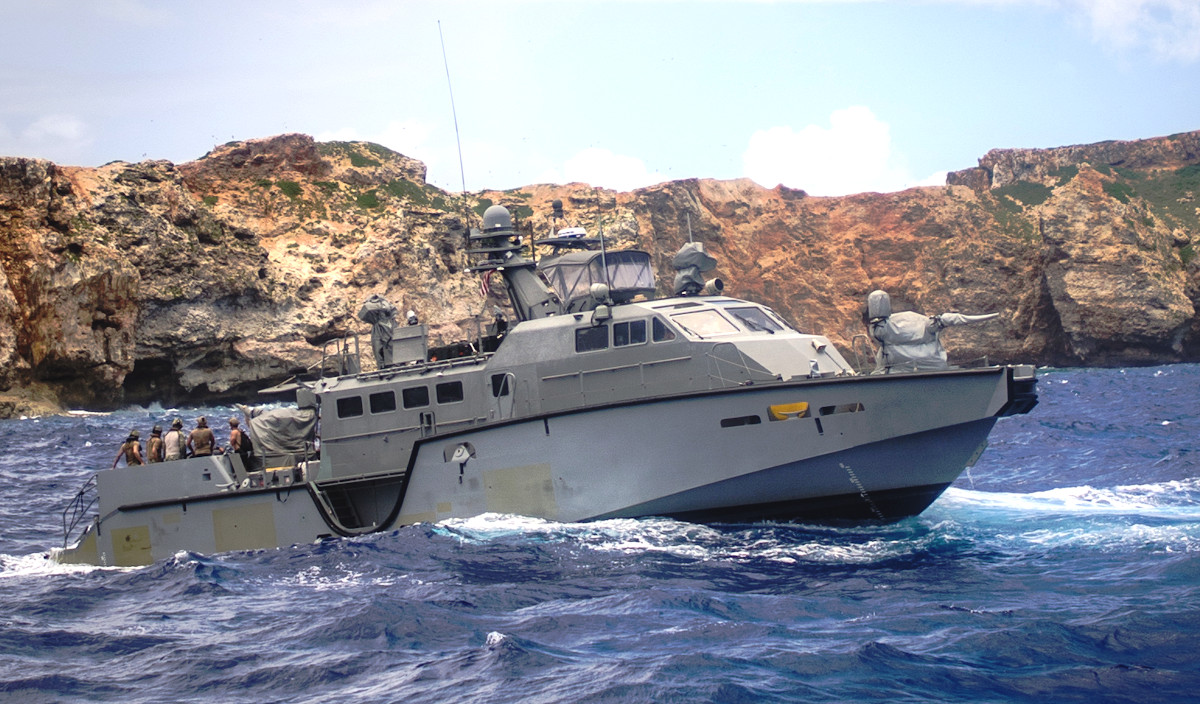
No matter what, in a major conflict, smaller patrol boats would still offer a cost-effective way to conduct valuable presence patrols or support other important missions, such as mine-clearing, in lower-threat areas to help free up larger warships for higher-risk missions.
“Where I would like to go [with the Mk IVs] is where do we have the opportunity inside the littorals to be able to conduct missions for the Navy that may free up capital assets to go do other missions,” Rear Admiral Brakke added in 2019. At that time the command was actively exploring how the patrol boats would fit into future operations against “great power competitors,” such as China and Russia.
From the beginning of the program, the Navy has also touted the ability of well deck-equipped amphibious warfare ships to carry large numbers of Mk VIs, making it easier to deploy and then rapidly reposition them across long distances. Amphibious warfare vessels could also serve as motherships for the patrol boats in remote or austere areas where there is limited infrastructure or locations where existing infrastructure has been destroyed or is otherwise unavailable.

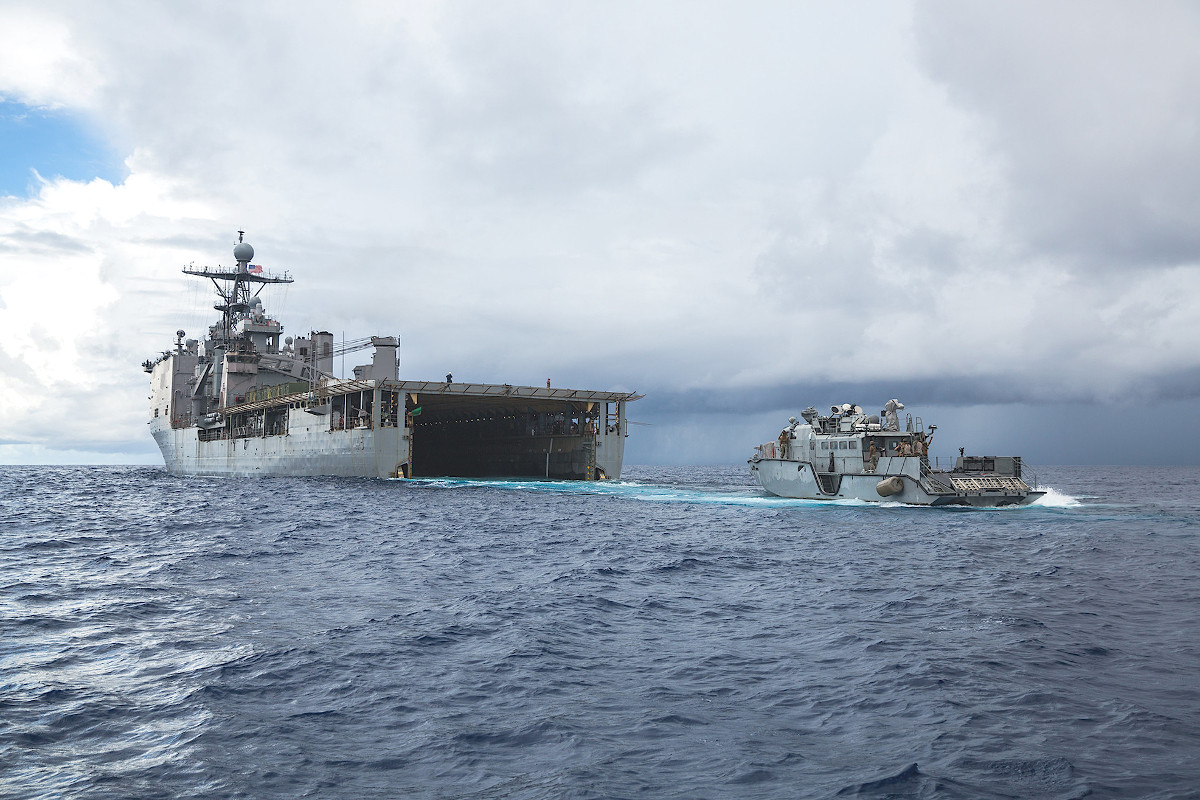

A source close to the program did acknowledge the costly maintenance issues associated with the Mk VI fleet that Marine Corps Major General King had brought up last month, but said they are more a product of poor training and the general command climate regarding these patrol boats than anything else. Whether this is true or not, one has to wonder whether some of these issues would have been alleviated, at least to some degree, by acquiring the full planned fleet of 48 boats. That would have required more significant investments in associated infrastructure and training and sustainment pipelines. Having just a dozen of them spread out in relatively small numbers around the world makes them very niche, low-density assets, something that very often comes with relatively high operating and maintenance costs.
From a basic cost perspective, the Navy, or the U.S. government as a whole, could seek to recoup some of what it has spent on the Mk VIs already, or otherwise extract value from them, by transferring them to another branch or agency outside of the U.S. military, making them available to American allies or partners, or even selling them back to SBI. However, according to one source, there does not appear to be much interest in any of these proposals. The U.S. government did approve a sale of Mk VIs to Ukraine last year, in a slightly different configuration to the Navy examples, which you can read about in more detail in this past War Zone piece, but SBI received a new contract to build those boats in January.
Of course, it is important to remember that Congress could still very much step in to block the Navy’s plans regarding the Mk VIs. Legislators would need to be convinced of the service’s rationale for getting rid of the boats at a time when it is also talking about the need to significantly expand the size of its fleets to meet operational demands around the world. Just last year, it released a proposal, known as Battle Force 2045, that called for increasing the size of its overall fleet to 500 ships or more by 2045. You can read more about that force structure concept in these past War Zone pieces.
President Joe Biden’s administration could also step in. It is already in the process of reviewing a number of significant policy positions and major acquisition programs, including Battle Force 2045. It certainly seems curious, at least, that there is apparently no space within plans for a total fleet with more than 500 ships for even a modest number of smaller patrol boats and similar craft.
So, it remains to be seen whether a year from now the Navy will still be operating any Mk VIs, despite its clear desire to divest them.
Contact the author: joe@thedrive.com
